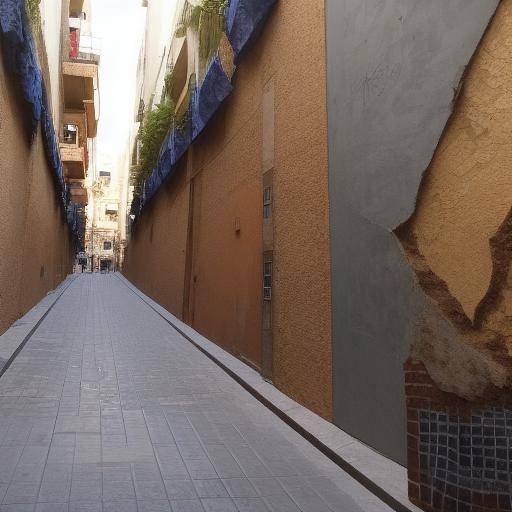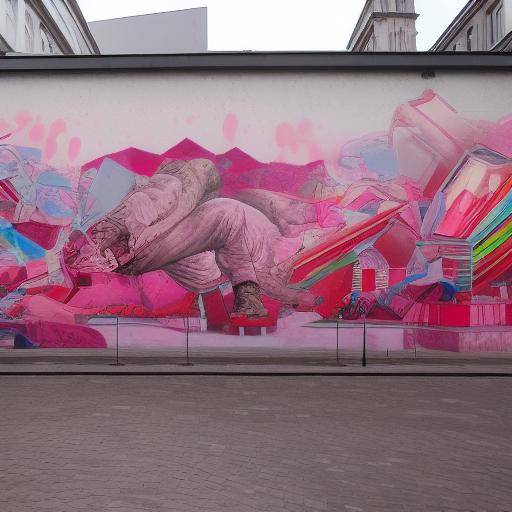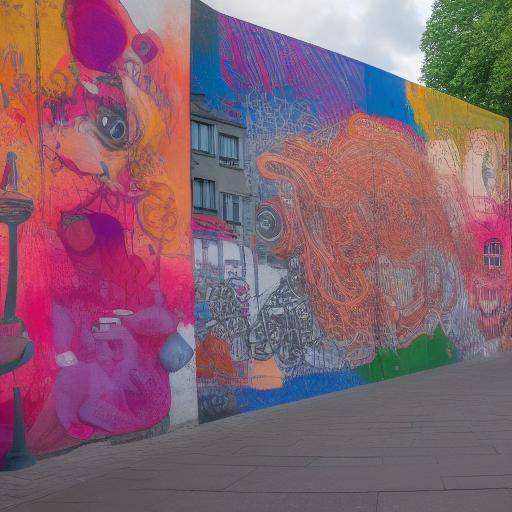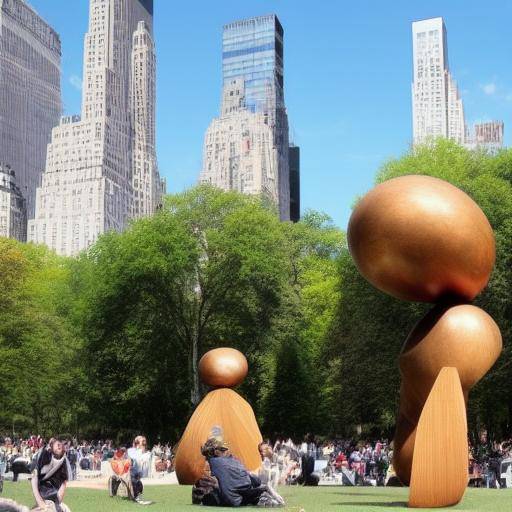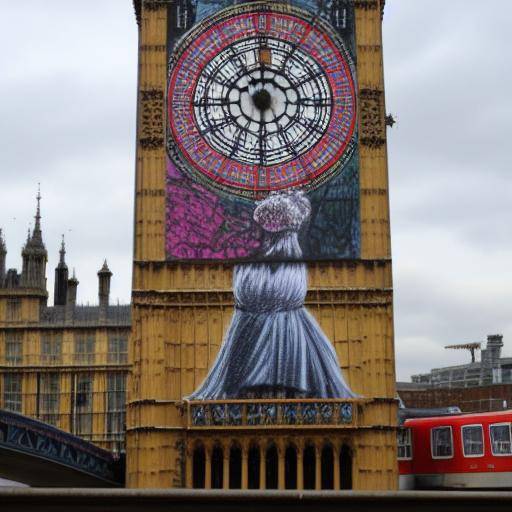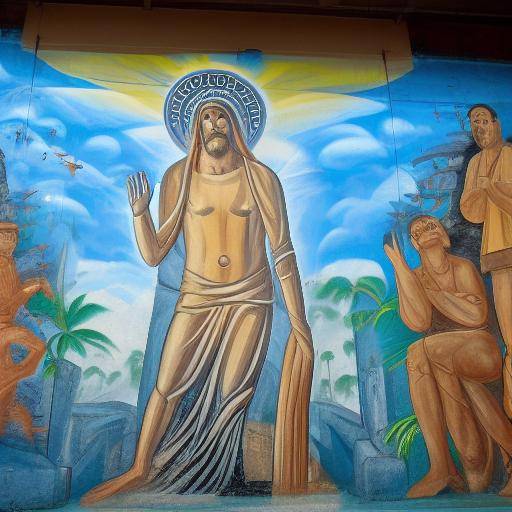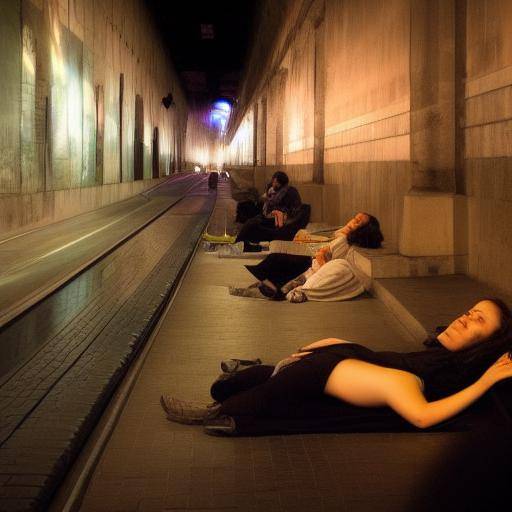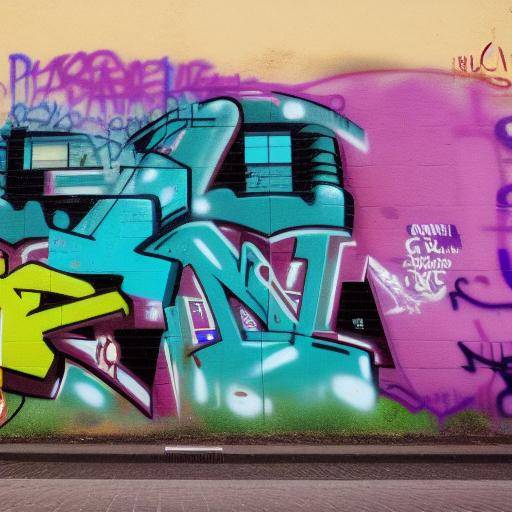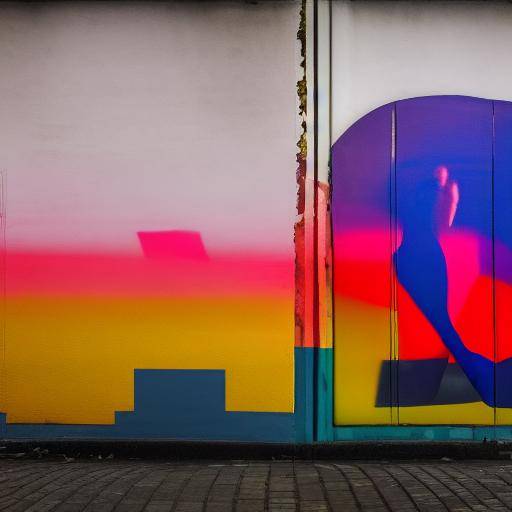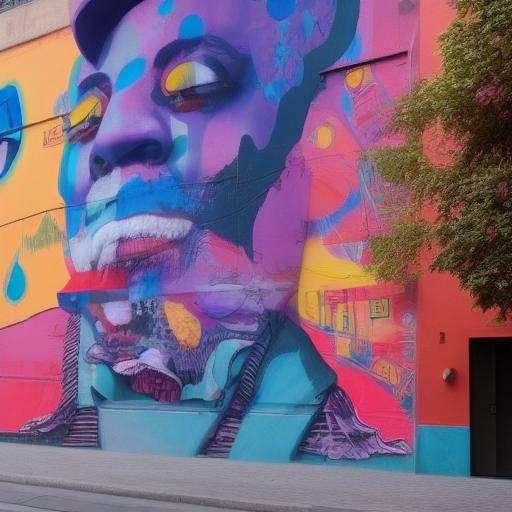
Berlin, the capital of Germany, is known for its rich history, vibrant alternative culture and constantly evolving urban art scene. Walking the streets of this city is immersed in a world of creativity, expression and rebellion. In this article, we will explore the fascinating route of urban art in Berlin, its origins, evolution, cultural impact and the way it intertwines with the dynamic alternative culture of the city. From its beginnings to future projections, immerse yourself in the vibrant world of Berlin urban art and discover why this city is an epicenter of creativity in every corner.
Urban Art in Berlin: An Identity Expression
Considered as a form of artistic expression and a platform for social and political protest, urban art has left an indelible mark on the visual landscape of Berlin. Its streets, walls and buildings have become canvases for renowned and emerging artists alike. This form of art challenges conventional boundaries and has become a powerful tool to express ideas, provoke reflection and foster the community.
History and Evolution of Urban Art in Berlin
Urban art in Berlin has its roots in the historic division of the city during the Cold War. The walls that divided East and West Berlin became canvases to express anguish, hope and struggle for freedom. The famous Berlin Wall became an outdoor gallery, with works that symbolized resistance and the desire for reunification.
Urban art has become an integral part of Berlin's identity, attracting artists from around the world and making the city a herviary of creativity. The neighborhoods like Kreuzberg, Friedrichshain and Mitte have been transformed into street art windows, with stunning murals and graffiti that give life to the streets.
Cultural and Social Impact
Urban art has not only embellished the corners of Berlin, but also served as a unifying force for the city. He has injected vitality into the neighborhoods, attracting avid visitors to explore the city's unique art scene.
The social and cultural impact of urban art is profound, as it promotes dialogue, diversity and inclusion. It gives voice to minorities, criticizes injustices and serves as a means to provoke meaningful discussions on current issues.
Alternative Culture in Berlin: A Spirit of Freedom and Experimentation
Urban art in Berlin is intrinsically linked to the alternative culture that defines the city. Berlin, with its reputation as a rebellious and avant-garde cultural capital, has been a magnet for free, creative and innovative spirits. The alternative culture of Berlin is a melting pot of ideas, ideologies and expressions that challenge established norms and celebrate diversity.
Origins and Transformation of Alternative Culture in Berlin
The origins of alternative culture in Berlin date back to the years after World War II, when the city became a refuge for dissidents, artists and visionaries. The fall of the Berlin Wall in 1989 triggered a cultural rebirth, transforming the city into an epicenter of creative freedom.
The alternative culture in Berlin ranges from underground music, the electronic club scene, to fashion, art and politics. It promotes experimentation, self-expression and tolerance, creating an enabling environment for unrestricted innovation and collaboration.
Global and Legacy Resonance
The impact of Berlin's alternative culture transcends the city's borders, influencing artistic and cultural movements around the world. The philosophy of freedom and authenticity that permeates this culture has become a banner for those who seek to challenge established norms and explore new ways of creativity and expression.
The Urban Art Route in Berlin: A Transforming Journey
Exploring the urban art route in Berlin is a transformative experience that allows you to immerse yourself in the cultural and historical wealth of the city. From the iconic murals to the lesser known corners, every work of art tells a unique story and reflects the diversity and ingenuity of the artists who created it.
Emblematic Places of Urban Art in Berlin
- East Side Gallery: Located on the east side of the former Berlin Wall, this outdoor gallery is a symbol of unity and freedom. With over 100 murals painted by artists from around the world, the East Side Gallery is a celebration of global creativity and resistance.
- Teufelsberg: This old cold war listening site has been transformed into an urban art center, with graffiti and murals covering the abandoned remains. The combination of history and art make Teufelsberg a fascinating place for urban art lovers.
- Kreuzberg and Friedrichshain: These lively neighborhoods are the epicenter of street art in Berlin, with streets full of graffiti, murals and artistic expressions that reflect the eclectic and dynamic essence of the city.
Urban Art in Berlin and Alternative Culture: Complementary Approaches
The urban art and alternative culture of Berlin are intertwined in a continuous dialogue, feeding and nourishing each other their innovative and resilient spirit. Both are considered manifestations of passion, dissidence and unlimited creativity, and together form the backbone of Berlin's identity as a city that challenges conventions and celebrates diversity.
Synergies and Collaborations
The urban art and alternative culture of Berlin are often interspersed with artistic collaborations, cultural events and community activities. Urban artists find in alternative culture an enabling space to exhibit their works and connect with a receptive and diverse audience. Similarly, cultural events and alternative spaces often incorporate urban art as a visual expression of their values and principles.
Reflections and Outlook
The urban art and alternative culture of Berlin serve as a mirror of contemporary society, challenging established norms and questioning conventional narratives. Through its fresh and provocative approach, both elements allow the critical examination of social structures, politics and identity, thus fostering reflection and change.
Conclusions: A Legacy of Creativity and Resilience in Berlin
The route of urban art in Berlin is a living testimony of human ability to convert adversity into art, oppression into expression and division into union. From the iconic murals to the ephemeral street expressions, every urban art work tells a story and embodies the unbreakable spirit of Berlin.
The alternative culture of the city, together with its urban art, persists as a beacon of freedom, innovation and diversity in a constantly changing world. Berlin offers a concrete reminder that art, creativity and dissidence continue to be forces that inspire, challenge and transform, transcending physical and cultural boundaries.
Frequently asked questions
What is the origin of urban art in Berlin?
Urban art in Berlin has its roots in the historic division of the city during the Cold War, especially in the famous Berlin Wall, which became an outdoor gallery of political and artistic expression.
How has urban art impacted on Berlin's identity?
Urban art has contributed significantly to the identity of Berlin, making the city an international centre of creativity. He has challenged traditional artistic conventions and served as a symbol of resistance and freedom of expression.
What are the emblematic places to explore urban art in Berlin?
Some of the most outstanding places to explore urban art in Berlin include the East Side Gallery, Teufelsberg, as well as the Kreuzberg and Friedrichshain neighbourhoods, which host a large number of street art works.
How does alternative culture influence the urban art scene in Berlin?
The alternative culture of Berlin has nurtured and complemented the urban art scene by providing an enabling environment for creativity and artistic expression. This symbiosis has fostered collaborations and contributed to the diversity of urban art in the city.
How do urban art and alternative culture unite in Berlin?
The urban art and alternative culture of Berlin are intertwined through artistic collaborations, cultural events and alternative spaces. This convergence reflects the complementarity and interdependence of both forms of expression in the city.
What is the legacy of urban art and alternative culture in Berlin?
The legacy of urban art and alternative culture in Berlin is a narrative of resilience, creativity and dissidence that has left a lasting mark on the city. Its impact continues to resonate, challenge and celebrate diversity and innovation.
In short, the urban art route in Berlin not only offers a look at the dynamic art scene of the city, but also invites visitors to reflect on the intersection between creativity, alternative culture and urban identity. As Berlin continues to be an epicenter of innovation and dissidence, its urban art and alternative culture will continue to serve as a testimony to the vitality and diversity of this unique city.

